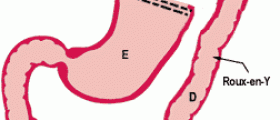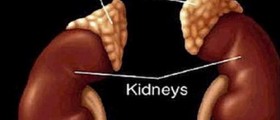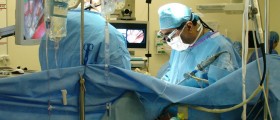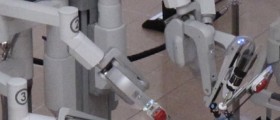
Laparoscopic Surgery
The following text will discuss on the surgery called laparoscopic surgery and it is a bandaid surgery, which has another name - minimal invasive surgery or MIS. This is one of the keyhole surgeries and this term is associated with the surgeries that use a very small incision of length from 0.5 to 1.5 cm. These are very tiny incisions when we take a look at the width of the standard open surgery incision. The surgical elements used during the surgery will be enhanced on the monitors due to the camera placed on the surgical elements that sends the video feed to the monitor. The areas on which the laparoscopic surgery is done are pelvic and abdominal area. Another name for the surgeries done on the chest or thoracic cavity is thoracoscopic surgery and it comes from the group of keyhole surgeries as well. The endoscopy field is where both of these surgeries come from. When we compare open surgery and the laparoscopic surgery, there are a lot more benefits associated with the laparoscopic surgery. Some of them are reduced recovery and pain due to the smaller incisions. There are two types of laparoscope, which is a surgical element of greatest importance for this surgery. The first one is a telescopic rod with a camera on the top, while the other is digital laparoscope, which has no rods but it has a pair of charge-coupled devices on the end. The cold light source needs to be connected with the fiber optic system cable in order to make the operative field visible. The trocar or cannula of 5mm or 10mm is inserted to give the image. The abdomen blows up like a balloon due to the carbon dioxide gas and this gives the space to work since it lifts the organs and provides space. Due to the inflammable ability and since the tissue and the human body can absorb it; the CO2 is used for these surgeries.
Risks
Risk of the injury of the larger or small bowel or blood vessel is the most significant risk and it is mostly present among those who underwent abdominal surgery before and those with the body mass index below 9. This type of injuries is rare but possible. A hemorrhage can be caused by a vascular injury and this may even get your life in danger. Due to the severity of such conditions, detecting and treating them as fast as possible is crucial. Due to the electrical current used, there is a risk from burns, peritonitis and organ perforation. If active electrode monitoring is used, this risk is eliminated. The use of gas during the surgery can lead to peritoneal trauma and hypothermia. The gas cannot be tolerated by everyone, so if someone cannot tolerate it, open surgery must be done. The gas cannot be removed in whole from the abdominal cavity and when it starts to rise, it can move the diaphragm and apply pressure on the phrenic nerve. This can develop pain in the shoulders and especially in the right one. Pain while breathing can also occur. Risks connected with the laparoscopic surgery may rise due to the dense adhesions and the coagulation disorders.
















Your thoughts on this
Loading...